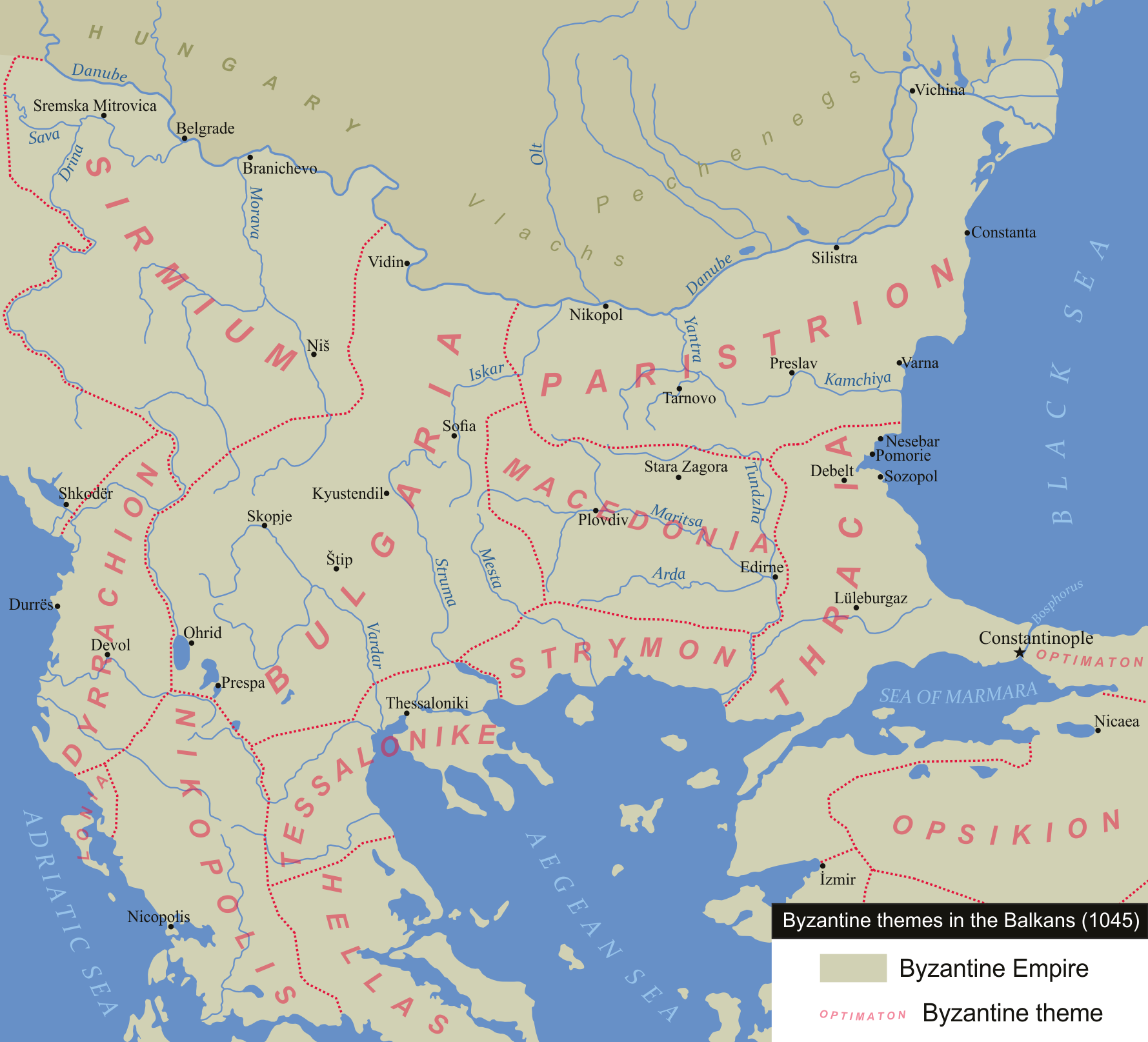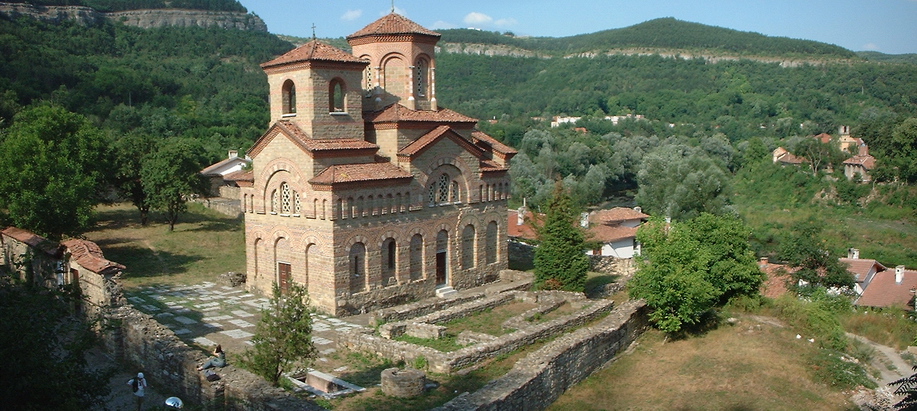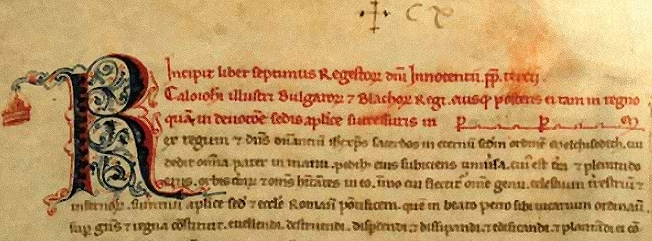|
Agnes Of Montferrat
Agnes of Montferrat ( 1187 – 1207/1208) was the first Empress consort of Henry of Flanders, Latin Emperor of Constantinople. Family She was a daughter of Boniface I, Marquess of Montferrat, founder of the Kingdom of Thessalonica, and his first wife Helena del Bosco. Her maternal grandfather was Anselmo, Marquess of Bosco. She was a sister of William VI, Marquess of Montferrat and Beatrice of Montferrat, wife of Henry II del Carretto, Marquess of Savona. She was also an older, paternal half-sister of Demetrius of Montferrat, King of Thessalonica. Empress consort According to Geoffrey of Villehardouin, Agnes was residing in Lombardy until her father summoned her to Thessaloniki in 1206. Boniface proceeded to send Otto de la Roche, or grand seignior of Athens, as his envoy to Henry, proposing a marriage between her and the emperor. Henry agreed to the offer. Boniface sent Agnes to Abydos, Hellespont, Mysia through a galley. His messengers then reached Henry with informat ... [...More Info...] [...Related Items...] OR: [Wikipedia] [Google] [Baidu] |
Henry Of Flanders
Henry (c.1178 – 11 June 1216) was Latin emperor of Constantinople from 1205 until his death in 1216. He was one of the leaders of the Fourth Crusade in which the Byzantine Empire was conquered and Latin Empire formed. Life Henry was born in Valenciennes, France around 1178. He was the son of Count Baldwin V of Hainaut and Countess Margaret I of Flanders. Henry first married (in 1204) Agnes of Montferrat, daughter of Boniface of Montferrat. Henry's only child by his first wife Agnes died in childbirth with his mother. Some contemporary historians say that Henry made a peace with Bulgarians after the death of Kaloyan, and a marriage was arranged in 1213 between Henry and Maria, daughter of Kaloyan and stepdaughter of Tsar Boril of Bulgaria. Henry had a daughter with an unnamed mistress. This daughter, whose name is not recorded, probably (Margaret-Isabel) later married Alexius Slav, who established his own state in the Rhodope mountains. He was later given the title of d ... [...More Info...] [...Related Items...] OR: [Wikipedia] [Google] [Baidu] |
Galley
A galley is a type of ship that is propelled mainly by oars. The galley is characterized by its long, slender hull, shallow draft, and low freeboard (clearance between sea and gunwale). Virtually all types of galleys had sails that could be used in favorable winds, but human effort was always the primary method of propulsion. This allowed galleys to navigate independently of winds and currents. The galley originated among the seafaring civilizations around the Mediterranean Sea in the late second millennium BC and remained in use in various forms until the early 19th century in warfare, trade, and piracy. Galleys were the warships used by the early Mediterranean naval powers, including the Greeks, Illyrians, Phoenicians, and Romans. They remained the dominant types of vessels used for war and piracy in the Mediterranean Sea until the last decades of the 16th century. As warships, galleys carried various types of weapons throughout their long existence, including rams, cata ... [...More Info...] [...Related Items...] OR: [Wikipedia] [Google] [Baidu] |
Latin Empresses Of Constantinople
The following is a list of the Latin empresses consort of Constantinople. Yolanda of Flanders and Marie of Brienne were not only empresses consort but also empresses regent. Catherine I and Catherine II were empresses regnant, not empresses consort. Latin Empresses consort of Constantinople Latin Empresses consort of Constantinople in exile * Beatrice of Sicily (1273–1275) * Marie de Bourbon (1347–1364) *Maria of Calabria (1364–1366) *Elizabeth of Slavonia (1370–1374) *Agnes of Durazzo (1382—1383) See also *Latin Emperor *List of Roman and Byzantine empresses * List of exiled and pretending Byzantine Empresses *List of Queens of Jerusalem *List of Queens of Cyprus * Princess of Antioch *Princess of Achaea References External linksLatin Emperors {{DEFAULTSORT:List Of Latin Empresses * Emp Latin Latin (, or , ) is a classical language belonging to the Italic branch of the Indo-European languages. Latin was originally a dialect spoken in the lower Tiber are ... [...More Info...] [...Related Items...] OR: [Wikipedia] [Google] [Baidu] |
Deaths In Childbirth
Death is the irreversible cessation of all biological functions that sustain an organism. For organisms with a brain, death can also be defined as the irreversible cessation of functioning of the whole brain, including brainstem, and brain death is sometimes used as a legal definition of death. The remains of a former organism normally begin to decompose shortly after death. Death is an inevitable process that eventually occurs in almost all organisms. Death is generally applied to whole organisms; the similar process seen in individual components of an organism, such as cells or tissues, is necrosis. Something that is not considered an organism, such as a virus, can be physically destroyed but is not said to die. As of the early 21st century, over 150,000 humans die each day, with ageing being by far the most common cause of death. Many cultures and religions have the idea of an afterlife, and also may hold the idea of judgement of good and bad deeds in one's life (heav ... [...More Info...] [...Related Items...] OR: [Wikipedia] [Google] [Baidu] |
1200s Deaths
1 (one, unit, unity) is a number representing a single or the only entity. 1 is also a numerical digit and represents a single unit of counting or measurement. For example, a line segment of ''unit length'' is a line segment of length 1. In conventions of sign where zero is considered neither positive nor negative, 1 is the first and smallest positive integer. It is also sometimes considered the first of the infinite sequence of natural numbers, followed by 2, although by other definitions 1 is the second natural number, following 0. The fundamental mathematical property of 1 is to be a multiplicative identity, meaning that any number multiplied by 1 equals the same number. Most if not all properties of 1 can be deduced from this. In advanced mathematics, a multiplicative identity is often denoted 1, even if it is not a number. 1 is by convention not considered a prime number; this was not universally accepted until the mid-20th century. Additionally, 1 is the s ... [...More Info...] [...Related Items...] OR: [Wikipedia] [Google] [Baidu] |
1180s Births
118 may refer to: *118 (number) *AD 118 *118 BC *118 (TV series) *118 (film) *118 (Tees) Corps Engineer Regiment *118 (Tees) Field Squadron, Royal Engineers See also *11/8 (other) 11/8 may refer to: *A time signature e.g.: "The Eleven" by the Grateful Dead *November 8 (month-day date notation) *August 11 (day-month date notation) *11 shilling The shilling is a historical coin, and the name of a unit of modern currency ... * Oganesson, synthetic chemical element with atomic number 118 {{Numberdis ... [...More Info...] [...Related Items...] OR: [Wikipedia] [Google] [Baidu] |
Maria Of Bulgaria, Latin Empress
Maria may refer to: People * Mary, mother of Jesus * Maria (given name), a popular given name in many languages Place names Extraterrestrial *170 Maria, a Main belt S-type asteroid discovered in 1877 *Lunar maria (plural of ''mare''), large, dark basaltic plains on Earth's Moon Terrestrial *Maria, Maevatanana, Madagascar *Maria, Quebec, Canada * Maria, Siquijor, the Philippines *María, Spain, in Andalusia *Îles Maria, French Polynesia *María de Huerva, Aragon, Spain *Villa Maria (other) Arts, entertainment, and media Films * ''Maria'' (1947 film), Swedish film * ''Maria'' (1975 film), Swedish film * ''Maria'' (2003 film), Romanian film * ''Maria'' (2019 film), Filipino film * ''Maria'' (2021 film), Canadian film directed by Alec Pronovost * ''Maria'' (Sinhala film), Sri Lankan upcoming film Literature * ''María'' (novel), an 1867 novel by Jorge Isaacs * ''Maria'' (Ukrainian novel), a 1934 novel by the Ukrainian writer Ulas Samchuk * ''Maria'' (play), a 1935 play ... [...More Info...] [...Related Items...] OR: [Wikipedia] [Google] [Baidu] |
List Of Latin Empresses
The following is a list of the Latin empresses consort of Constantinople. Yolanda of Flanders and Marie of Brienne were not only empresses consort but also empress regent, empresses regent. Catherine I, Latin Empress, Catherine I and Catherine II, Latin Empress, Catherine II were empress regnant, empresses regnant, not empresses consort. Latin Empresses consort of Constantinople Latin Empresses consort of Constantinople in exile *Beatrice of Sicily, Latin Empress, Beatrice of Sicily (1273–1275) *Marie de Bourbon, Princess of Achaea, Marie de Bourbon (1347–1364) *Maria of Calabria (1364–1366) *Elizabeth of Slavonia (1370–1374) *Agnes of Durazzo (1382—1383) See also *Latin Emperor *List of Roman and Byzantine empresses *List of exiled and pretending Byzantine Empresses *List of Queens of Jerusalem *List of Queens of Cyprus *Princess of Antioch *Princess of Achaea References External linksLatin Emperors {{DEFAULTSORT:List Of Latin Empresses Latin Empresses of Const ... [...More Info...] [...Related Items...] OR: [Wikipedia] [Google] [Baidu] |
Marie Of Champagne
Marie of Champagne ( – 29 August 1204) was the first Latin Empress of Constantinople by marriage to Emperor Baldwin I. She acted as regent of Flanders during the absence of her spouse from 1202 until 1204. Life Marie was a daughter of Henry I, Count of Champagne, and Marie, daughter of King Louis VII of France and Eleanor of Aquitaine. According to the chronicle of Gislebert of Mons, on 13 May 1179 Marie was officially bethrothed to Baldwin, son of the count of Flanders and Hainaut, to whom she was already promised to be wed in 1171. Her betrothed was Baldwin VI, son of Baldwin V, Count of Hainaut and Margaret I, Countess of Flanders. Countess of Flanders On 6 January 1186, Marie and Baldwin were married at Valenciennes. The young countess consort issued charters in her own name and seems to have a soft spot for the cities in Flanders.Karen S. Nicholas, Countesses as Rulers in Flanders, in Theodore Evergates (ed.), ''Aristocratic Women in Medieval France'', (Universit ... [...More Info...] [...Related Items...] OR: [Wikipedia] [Google] [Baidu] |
Ivan Asen I Of Bulgaria
Ivan Asen I, also known as Asen I or John Asen I ( bg, Иван Асен I; died in 1196), was emperor or tsar of Bulgaria from 1187/1188 to 1196 as co-ruler with his elder brother, Peter II. Hailing from the Byzantine theme of Paristrion, his exact place and date of birth are unknown. Although most contemporaneous chronicles describe Asen and his brothers, Theodor (Peter) and Kaloyan, as Vlachs, they were probably of mixed Vlach, Bulgarian, and Cuman ancestry. In 1185, Asen and Theodor went to see the Byzantine Emperor Isaac II Angelos in Thrace to demand an estate in the Balkan Mountains. After the Emperor refused and humiliated them, the brothers persuaded their Bulgarian and Vlach compatriots to rise up against the Byzantine Empire. Before the end of the year, Theodor was crowned Emperor of Bulgaria, taking the name Peter. After Isaac II defeated them in early 1186, Asen and Peter fled north over the Danube but returned in the autumn, accompanied by Cuman reinforcements. ... [...More Info...] [...Related Items...] OR: [Wikipedia] [Google] [Baidu] |
Peter IV Of Bulgaria
Peter II,), because they take into consideration two previous leaders of anti-Byzantine rebellions, Peter Delyan (who assumed the imperial title in 1040) and Constantine Bodin (who took the name Peter in 1072)., group=note born Theodor, also known as Theodor-Peter ( bg, Теодор-Петър; died in 1197), was the first emperor or tsar of the restored Bulgarian Empire from 1185 to 1197. He hails from the Byzantine theme of Paristrion, although his exact place and date of birth are unknown. He and his younger brothers, Asen and Kaloyan, were mentioned as Vlachs in most foreign contemporaneous sources, but they were probably of a mixed Vlach, Bulgarian, and Cuman origin. In 1185, Theodor and Asen approached the Byzantine Emperor Isaac II Angelos in Thrace, demanding an estate in the Balkan Mountains. After the Emperor refused and humiliated them, they decided to incite a rebellion, taking advantage of the discontent that a new tax had caused among the Bulgarians and Vlachs ... [...More Info...] [...Related Items...] OR: [Wikipedia] [Google] [Baidu] |
Kaloyan Of Bulgaria
Kaloyan or Kalojan, also known as Ioannitsa or Johannitsa ( bg, Калоян, Йоаница; 1170 – October 1207), was emperor or tsar of Bulgaria from 1196 to 1207. He was the younger brother of Theodor and Asen, who led the anti-Byzantine uprising of the Bulgarians and Vlachs in 1185. The uprising ended with the restoration of Bulgaria as an independent state. He spent a few years as a hostage in Constantinople in the late 1180s. Theodor, crowned Emperor Peter II, made him his co-ruler after Asen was murdered in 1196. A year later, Peter was also murdered, and Kaloyan became the sole ruler of Bulgaria. To obtain an imperial title from the Holy See, Kaloyan entered into correspondence with Pope Innocent III, offering to acknowledge papal primacy. His expansionist policy brought him into conflict with the Byzantine Empire, Hungary, and Serbia. In 1204, King Emeric of Hungary allowed the papal legate who was to deliver a royal crown to Kaloyan to enter Bulgaria only at t ... [...More Info...] [...Related Items...] OR: [Wikipedia] [Google] [Baidu] |





